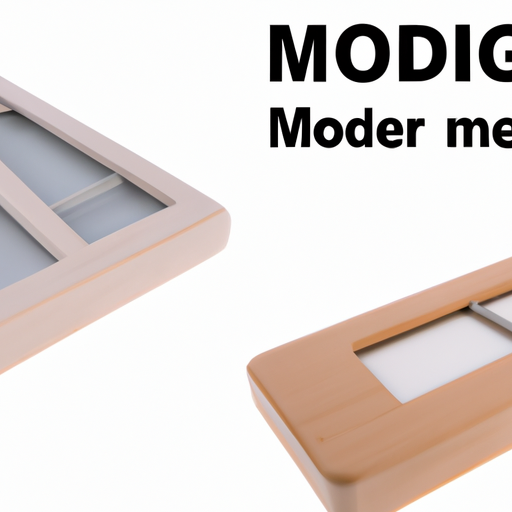The visible light device components market is constantly evolving, with new technologies and innovations being introduced regularly. As a result, there are several purchasing models available for businesses looking to acquire the latest visible light device components. In this article, we will explore some of the most common purchasing models and discuss their advantages and disadvantages.
One of the most popular purchasing models for visible light device components is the traditional procurement model. In this model, businesses purchase components directly from manufacturers or distributors. This model offers businesses a high degree of control over the sourcing and procurement process, allowing them to negotiate prices and terms directly with suppliers. However, this model can be time-consuming and resource-intensive, as businesses must invest time and effort in researching suppliers, obtaining quotes, and negotiating contracts.
Another common purchasing model for visible light device components is the outsourcing model. In this model, businesses outsource the procurement of components to a third-party procurement service provider. This model can be beneficial for businesses that do not have the resources or expertise to manage the procurement process internally. Outsourcing procurement can also help businesses reduce costs and improve efficiency by leveraging the expertise and buying power of a third-party provider. However, businesses must carefully vet potential providers to ensure they have the necessary expertise and experience to meet their specific procurement needs.
A third purchasing model for visible light device components is the subscription model. In this model, businesses pay a recurring fee to access a curated selection of components from a subscription service provider. This model can be beneficial for businesses that require a steady supply of components on an ongoing basis, as it provides a predictable cost structure and eliminates the need for upfront capital investment. However, businesses must carefully evaluate the terms and conditions of the subscription service to ensure they are getting the components they need at a competitive price.
Finally, some businesses may choose to adopt a hybrid purchasing model for visible light device components. In this model, businesses combine elements of the traditional procurement, outsourcing, and subscription models to create a customized procurement strategy that meets their specific needs. For example, a business may choose to outsource the procurement of certain components while purchasing others directly from manufacturers. This model allows businesses to leverage the benefits of multiple purchasing models while mitigating their respective drawbacks.
In conclusion, there are several purchasing models available for businesses looking to acquire the latest visible light device components. Each model has its own advantages and disadvantages, and businesses must carefully evaluate their specific needs and requirements to determine which model is best suited to their unique circumstances. By choosing the right purchasing model, businesses can ensure they have access to the components they need to stay competitive in the rapidly evolving visible light device components market.
The visible light device components market is constantly evolving, with new technologies and innovations being introduced regularly. As a result, there are several purchasing models available for businesses looking to acquire the latest visible light device components. In this article, we will explore some of the most common purchasing models and discuss their advantages and disadvantages.
One of the most popular purchasing models for visible light device components is the traditional procurement model. In this model, businesses purchase components directly from manufacturers or distributors. This model offers businesses a high degree of control over the sourcing and procurement process, allowing them to negotiate prices and terms directly with suppliers. However, this model can be time-consuming and resource-intensive, as businesses must invest time and effort in researching suppliers, obtaining quotes, and negotiating contracts.
Another common purchasing model for visible light device components is the outsourcing model. In this model, businesses outsource the procurement of components to a third-party procurement service provider. This model can be beneficial for businesses that do not have the resources or expertise to manage the procurement process internally. Outsourcing procurement can also help businesses reduce costs and improve efficiency by leveraging the expertise and buying power of a third-party provider. However, businesses must carefully vet potential providers to ensure they have the necessary expertise and experience to meet their specific procurement needs.
A third purchasing model for visible light device components is the subscription model. In this model, businesses pay a recurring fee to access a curated selection of components from a subscription service provider. This model can be beneficial for businesses that require a steady supply of components on an ongoing basis, as it provides a predictable cost structure and eliminates the need for upfront capital investment. However, businesses must carefully evaluate the terms and conditions of the subscription service to ensure they are getting the components they need at a competitive price.
Finally, some businesses may choose to adopt a hybrid purchasing model for visible light device components. In this model, businesses combine elements of the traditional procurement, outsourcing, and subscription models to create a customized procurement strategy that meets their specific needs. For example, a business may choose to outsource the procurement of certain components while purchasing others directly from manufacturers. This model allows businesses to leverage the benefits of multiple purchasing models while mitigating their respective drawbacks.
In conclusion, there are several purchasing models available for businesses looking to acquire the latest visible light device components. Each model has its own advantages and disadvantages, and businesses must carefully evaluate their specific needs and requirements to determine which model is best suited to their unique circumstances. By choosing the right purchasing model, businesses can ensure they have access to the components they need to stay competitive in the rapidly evolving visible light device components market.
